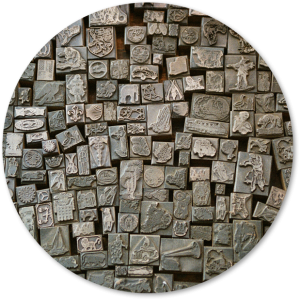The “Next Big Thing” series wrap-up: How to rule them all?
What is it that remains for the 8th and last issue of the “Next Big Thing” blog post series: To “rule them all” (all the forces, disruptive challenges and game changing innovations) and keep services connected, operating, integrated, … to deliver value to the business.
A bit ago, I came upon Jonathan Murray’s concept of the Composable Enterprise – a paradigm which essentially preaches fully decoupled infrastructure and application as services for company IT. Whether the Composable Enterprise is an entire new approach or just a pin-pointed translation of what is essential to businesses mastering digital transformation challenges is all the same.
The importance lies with the core concepts of what Jonathan’s paradigm preaches. These are to
- decouple the infrastructure
- make data a service
- decompose applications
- and automate everything
Decouple the Infrastructure.
Rewind into my own application development and delivery times during the 1990ies and the 00-years: When we were ready to launch a new business application we would – as part of the rollout process – inform IT of resources (servers, databases, connections, interface configurations) needed to run the thing. Today, large IT ecosystems sometimes still function that way, making them a slow and heavy-weight inhibitor of business agility. The change to incorporate here is two-folded: On the one hand infra responsibles must understand that they need to deliver on scale, time, demand, … of their business customers (which includes more uniform, more agile and more flexible – in terms of sourcing – delivery mechanisms). And on the other hand, application architects need to understand that it is not anymore their architecture that defines IT needs but in turn their architecture needs to adapt to and adopt agile IT infrastructure resources from wherever they may be sourced. By following that pattern, CIOs will enable their IT landscapes to leverage not only more cloud-like infrastructure sourcing on-premise (thereby enabling private clouds) but also will they become capable of ubiquitously using ubiquitous resources following hybrid sourcing models.
Make Data a Service.
This isn’t about BigData-like services, really. It might be (in the long run). But this is essentially about where the properties and information of IT – of applications and services – really is located. Rewind again. This time only for like 1 or 2 years. The second last delivery framework, that me and my team of gorgeous cloud aficionados created, was still built around a central source of information – essentially a master data database. This simply was the logical framework architecture approach back then. Even only a few months – when admittedly me and my then team (another awesome one) already knew that information needs to lie within the service – it was still less complex (hence: quicker) to construct our framework around such a central source of (service) wisdom. What the Composable Enterprise, though, rightly preaches is a complete shift of where information resides. Every single service, which offers its capabilities to the IT world around it, needs to provide a well-defined, easy to consume, transparently reachable interface to query and store any information relevant to the consumption of the service. Applications or other services using that service simply engage via that interface – not only to leverage the service’s capabilities but even more to store and retrieve data and information relevant to the service and the interaction with it. And there is no central database. In essence there is no database at all. There is no need for any. When services inherently know what they manage, need and provide, all db-centric architecture for the sole benefit of the db as such becomes void.
Decompose Applications.
The aforementioned leads one way into the decomposition pattern. More important, however, is to spend more thorough thinking about what a single business related activity – a business process – really needs in terms of application support. And in turn, what the applications providing this support to the business precisely need to be capable of. Decomposing Applications means to identify useful service entities which follow the above patterns, offer certain functionality in an atom kind-of way via well-defined interfaces (APIs) to the outside world and thereby create an application landscape which delivers on scale, time, demand, … just by being composed through service orchestration in the right – the needed – way. This is the end of huge monolithic ERP systems, which claim to offer all that a business needs (you just needed to customize them rightly). This is the commencing of light-weight services which rapidly adopt to changing underlying infrastructures and can be consumed not only for the benefit of the business owning them but – through orchestration –form whole new business process support systems for cross-company integration along new digitalized business models.
Automate Everything.
So, eventually we’ve ended at the heart of how to breath life into an IT which supports businesses in their digital transformation challenge.
Let me talk you into one final example emphasizing the importance of facing all these disruptive challenges openly: An Austrian bank of high reputation (and respectful success in the market) gave a talk at the Pioneers about how they discovered that they are actually not a good bank anymore, how they discovered that – in some years’ time – they’d not be able to live up to the market challenges and customers’ demands anymore. What they discovered was simply, that within some years they would lose customers just because of their inability to offer a user experience integrated with the mobile and social demands of today’s generations. What they did in turn was to found a development hub within their IT unit, solely focussing on creating a new app-based ecosystem around their offerings in order to deliver an innovative, modern, digital experience to their bank account holders.
Some time prior to the Pioneers, I had received a text that “my” bank (yes, I am one of their customers) now offers a currency exchange app through which I can simply order the amount of currency needed and would receive a confirmation once it’s ready to be handed to me in the nearest branch office. And some days past the Pioneers I received an eMail that a new “virtual bank servant” would be ready as an app in the net to serve all my account-related needs. Needless to say that a few moments later I was in and that the experience was just perfect even though they follow an “early validation” policy with their new developments, accepting possible errors and flaws for the benefit of reduced time to market and more accurate customer feedback.
Now, for a moment imagine just a few of the important patterns behind this approach:
- System maintenance and keeping-the-lights-on IT management
- Flexible scaling of infrastructures
- Core banking applications and services delivering the relevant information to the customer facing apps
- App deployment on a regular – maybe a daily – basis
- Integration of third-party service information
- Data and information collection and aggregation for the benefit of enhanced customer behaviour insight
- Provision of information to social platforms (to influence customer decisions)
- Monitoring and dashboards (customer-facing as well as internally to business and IT leaders)
- Risk mitigation
- … (I could probably go on for hours)
All of the above capabilities can – and shall – be automated to a certain, a great extent. And this is precisely what the “automate everything” pattern is about.
Conclusion
There is a huge business shift going on. Software, back in the 80ies and 90ies was a driver for growth, had its downturn in and post the .com age and now enters an era of being ubiquitously demanded.
Through the innovative possibilities by combining existing mobile, social and data technologies, through the merge of physical and digital worlds and through the tremendously rapid invention of new thing-based daily-life support, businesses of all kind will face the need for software – even if they had not felt that need so far.
The Composable Enterprise – or whatever one wants to call a paradigm of loosely coupled services being orchestrated through well-defined transparently consumable interfaces – is a way for businesses to accommodate this challenge more rapidly. Automating daily routine – like e.g. the aforementioned tasks – will be key to enterprises which want to stay on the edge of innovation within these fast changing times.
Most importantly, though, is to stay focussed within the blurring worlds of things, humans and businesses. To keep the focus on innovation not for the benefit of innovation as such but for the benefit of growing the business behind.
Innovation Architects will be the business angels of tomorrow – navigating their stakeholders through an ongoing revolution and supporting or driving the right decisions for implementing and orchestrating services in a business-focussed way.
{the feature image of this last “The Next Big Thing” series post shows a design by New Jersey and New York-based architects and designers Patricia Sabater, Christopher Booth and Aditya Chauan: The Sky Cloud Skyscraper – found on evolo.us/architecture}




